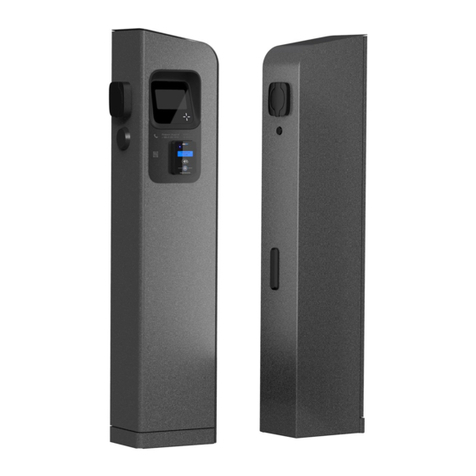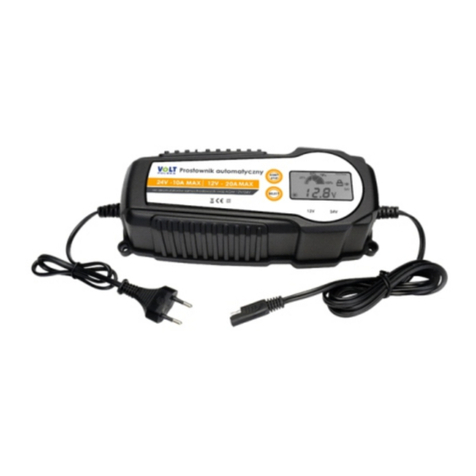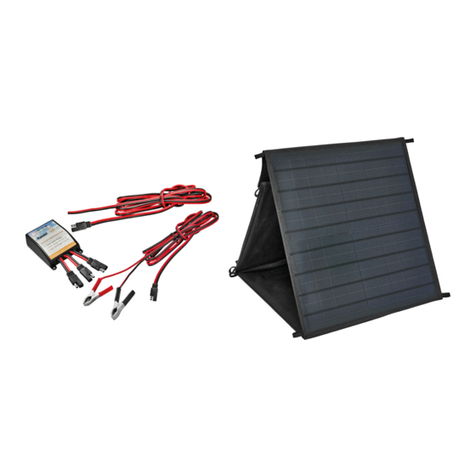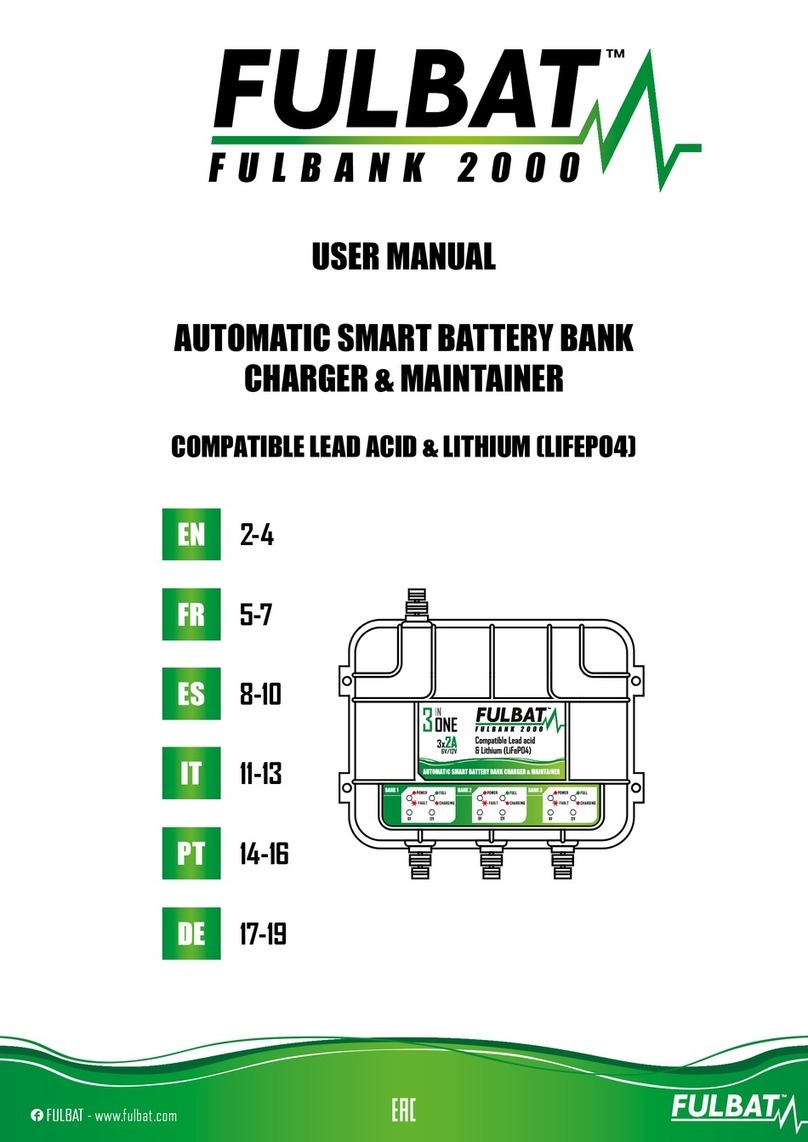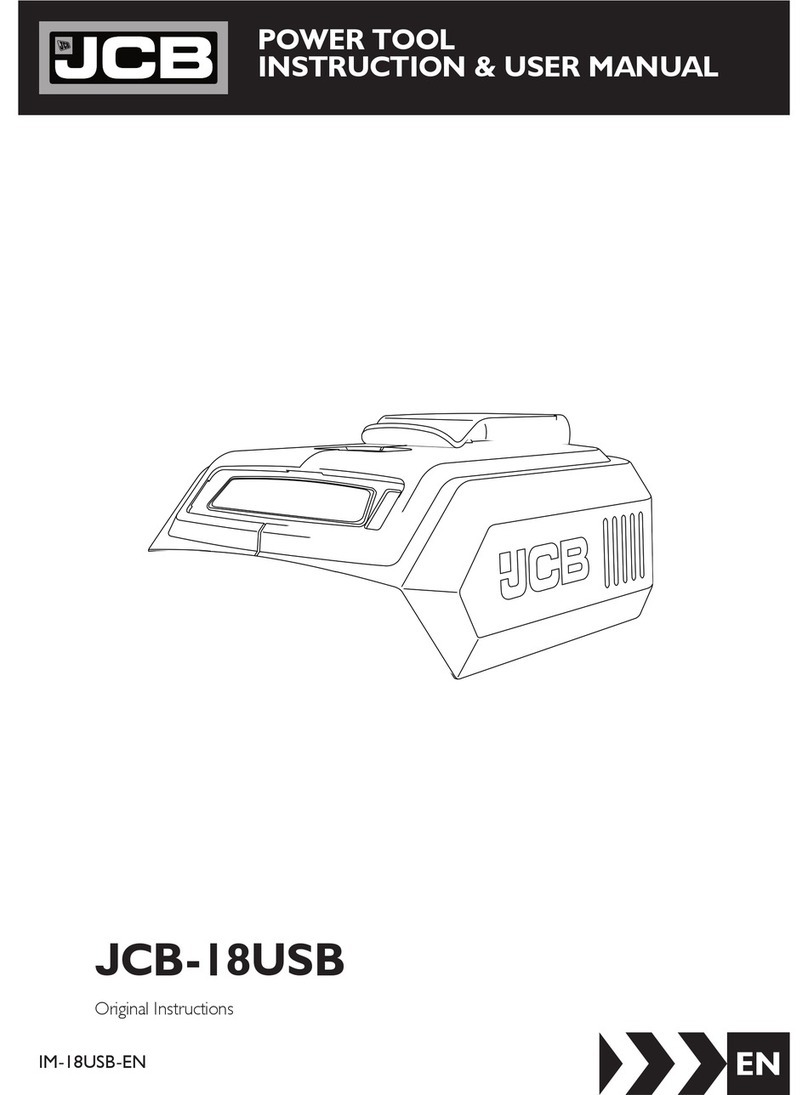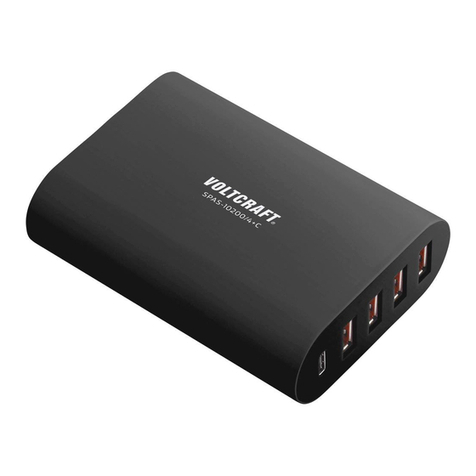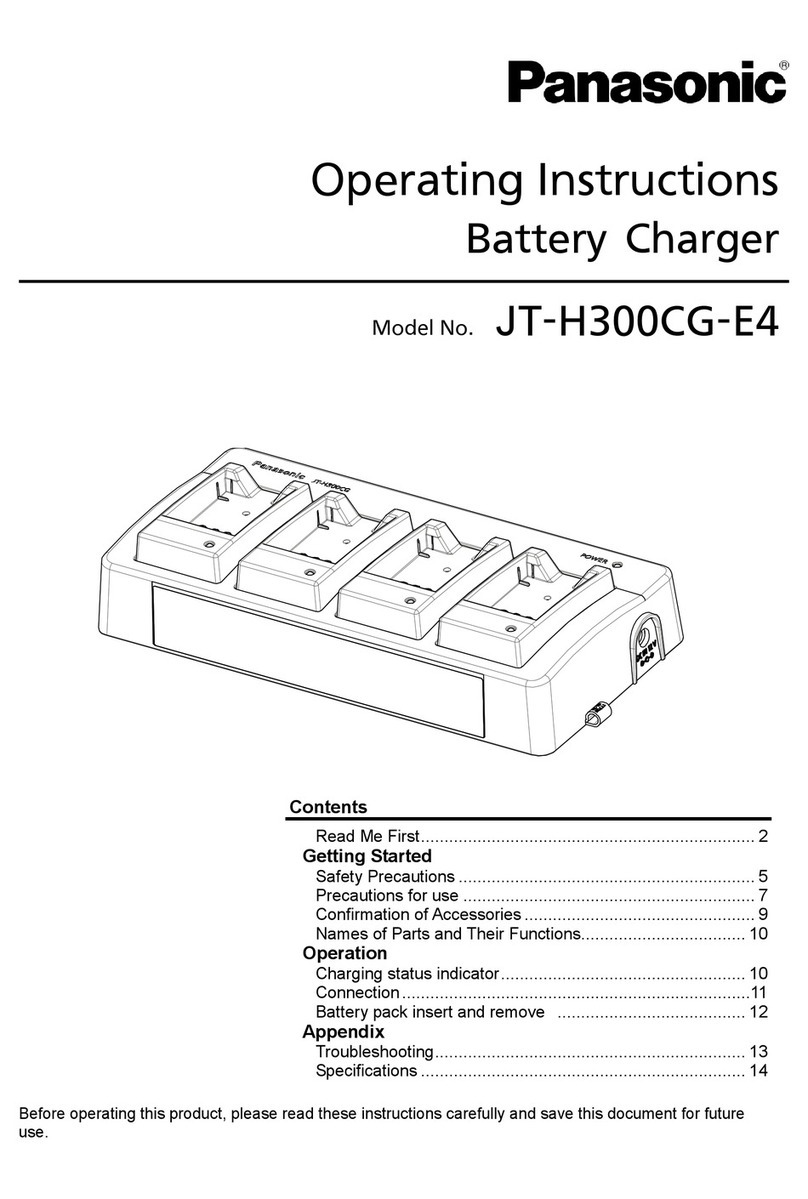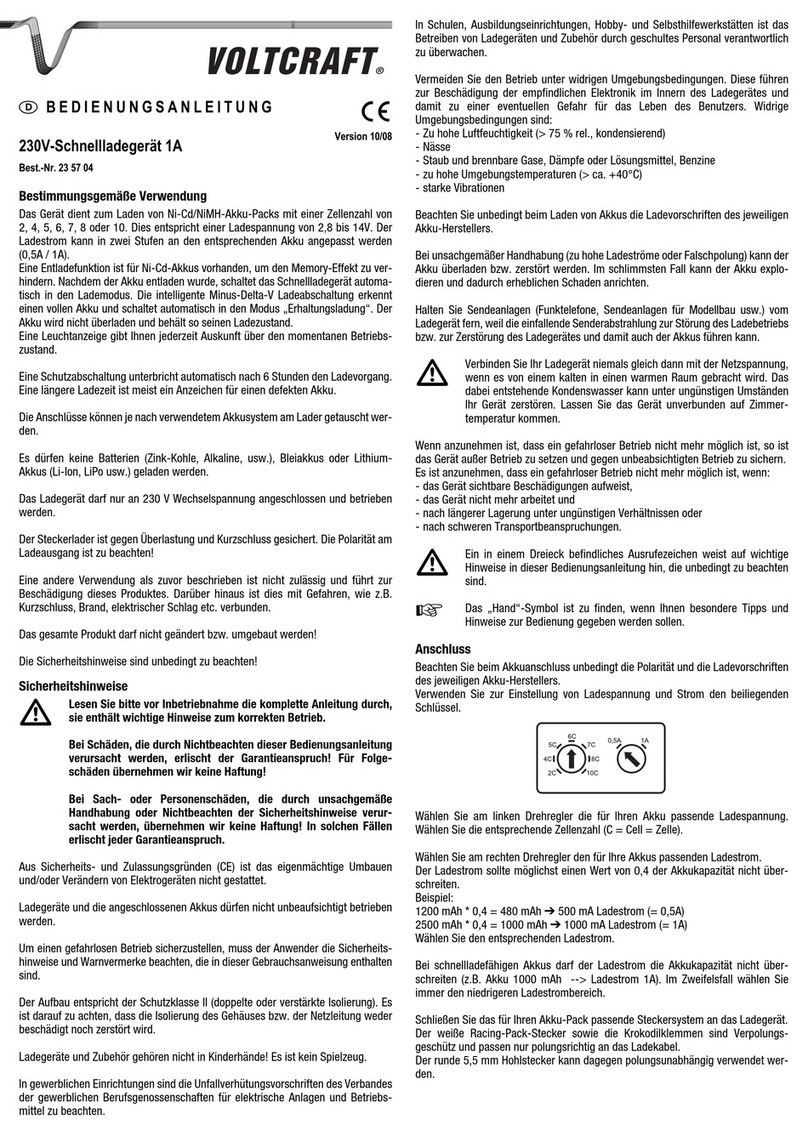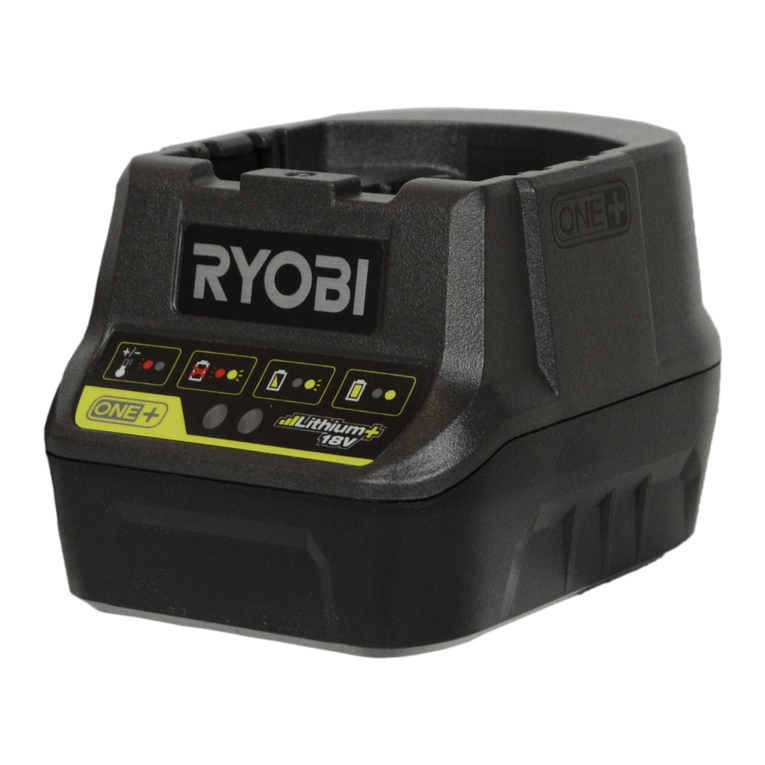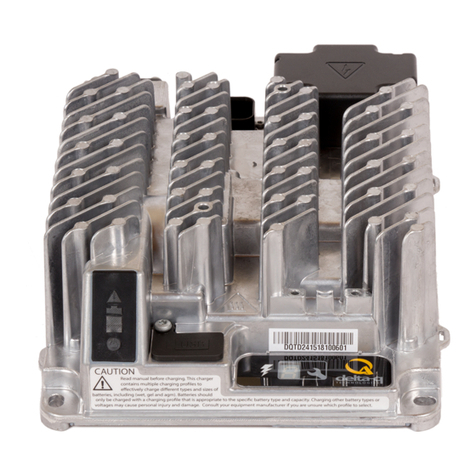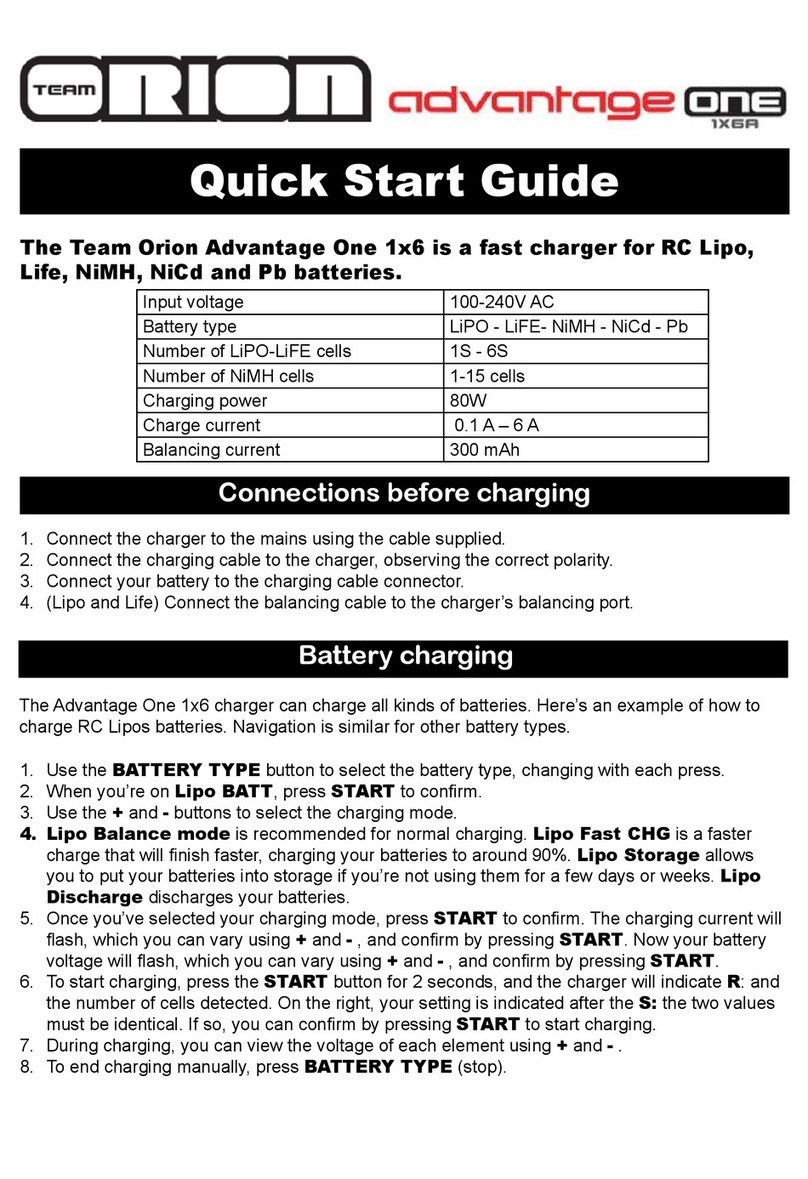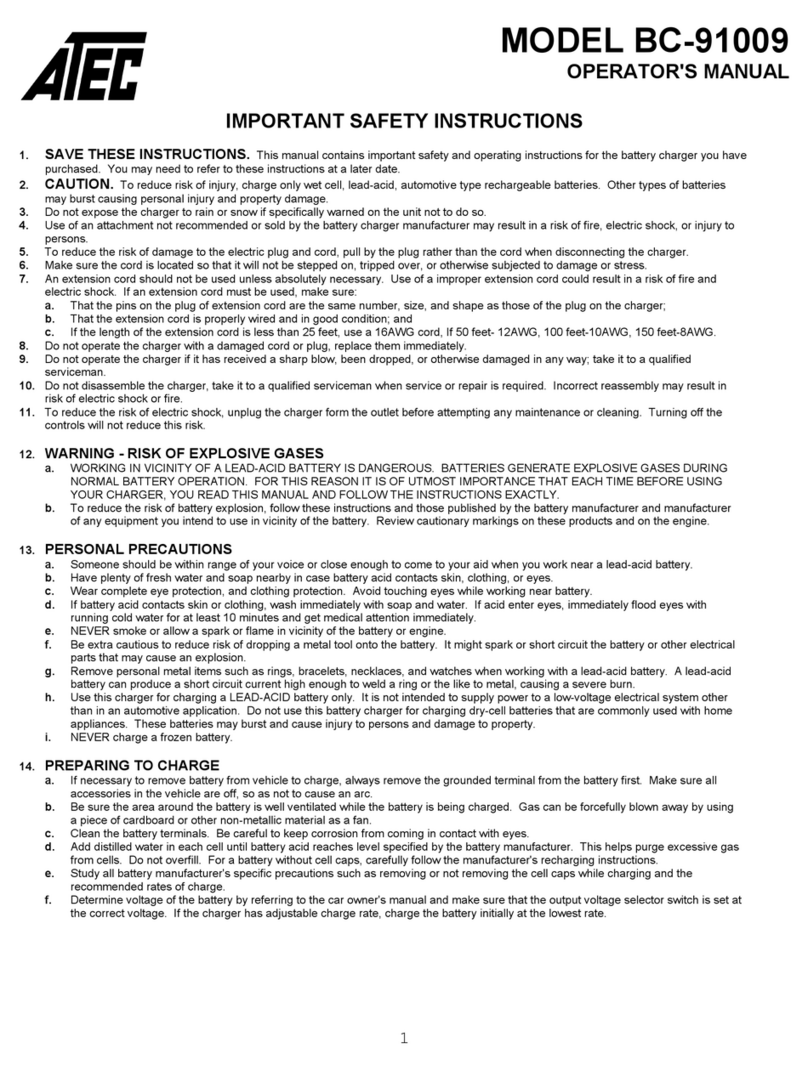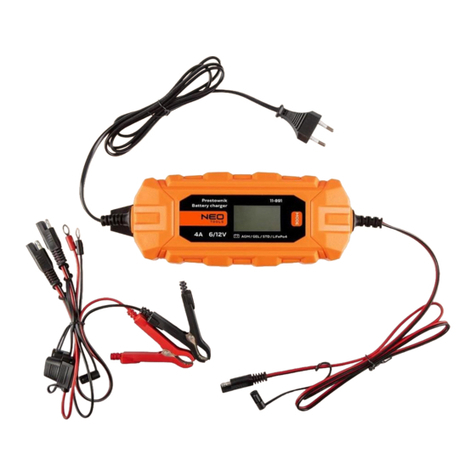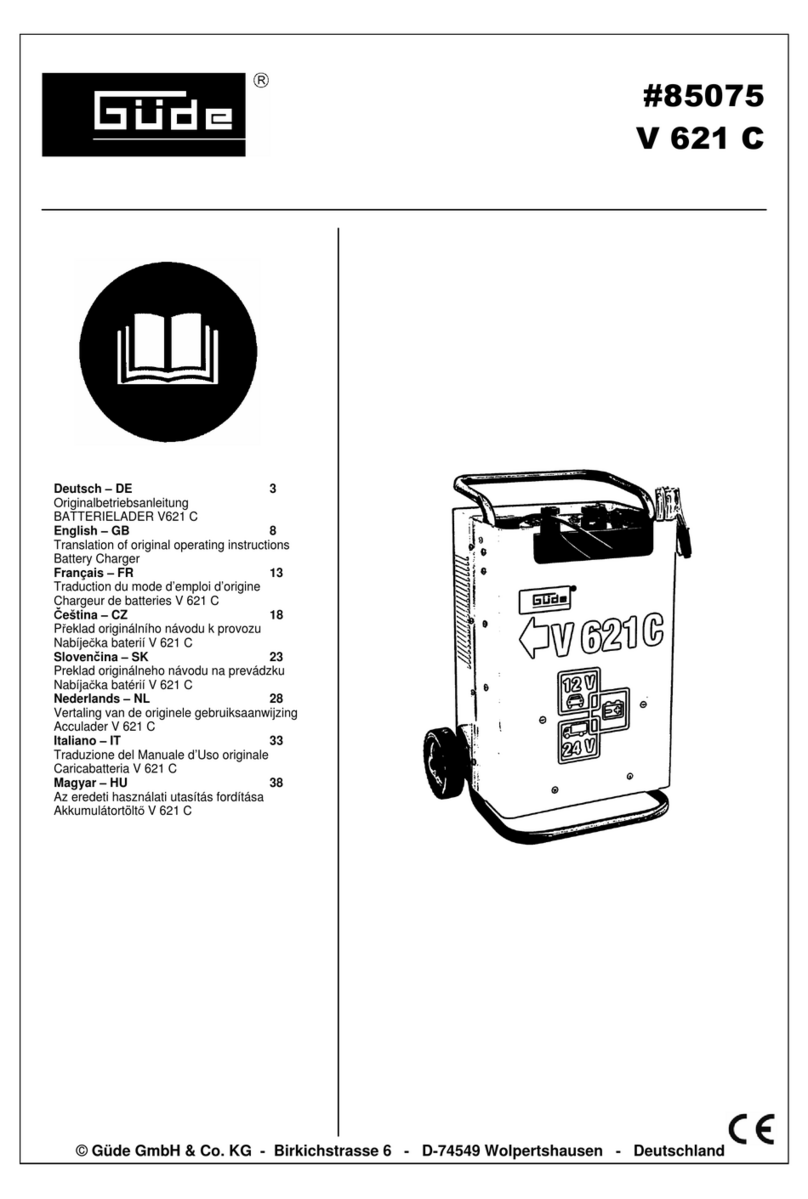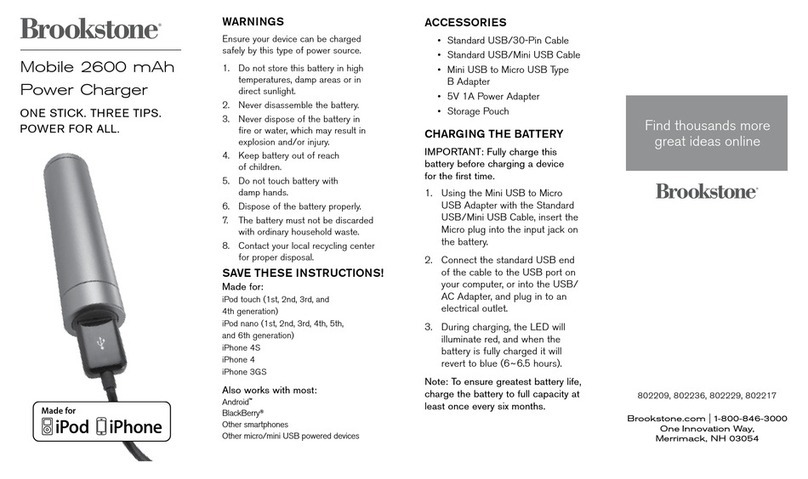Etrel INCH Operating and maintenance manual

Ver. 2018-40
Etrel INCH Installation
procedure
EN

2

3| 12
QUICK START GUIDE
WARNING SIGNS
This manual uses the following warning signs:
Danger! Immediate risk of injury or death.
Caution! Possible danger to the product or environment.
Note. Useful information
Please follow all the safety precautions in these
installations at all times. Failure to do so might result in
damage to the product and injuries or death. Any
unauthorised modification or tampering with the
product may void the product warranty.
SAFETY INFORMATION
Etrel INCH charging station has been designed and
tested with international standards. The charging
station is compliant with IEC 61851-1 international
standard which defines conductive AC electric
vehicle charging (Part 1, Part 21 and Part 23) and
supports Mode 3 charging for safe recharging of any
standard electric vehicle.
Use the charging station exclusively for the purpose
intended.
EN

4| 12
INTENDED USE
Etrel INCH charging station is intended only for
charging of electric vehicles and should not be used
to charge any other appliances or devices or for any
other purposes. The manufacturer accepts no
responsibility for damage or injuries resulting from
incorrect installation or inappropriate use of the
product.
INSTALLA TIO N AN D MAI NTE NANCE
Do not install charging station near flammable,
explosive, or combustive materials.
Installation of charging station should be done in
dry weather conditions.
Electrical installation, wiring, and connections
must be carried out by qualified electrician or
technician in accordance with all local electrical
codes and ordinances.
Warning! Before installing and wiring the
charging station, make sure that the power
supply is disconnected: remove fuses or
deactivate the circuit breaker to protect from
unintentional powering of the device.
Charging station can be installed, maintained, and
repaired by qualified personnel only.
Charging station’s power supply should always be
switched off during the maintenance and repair.
Avoid hazardous risks. Only the manufacturer, an
authorized service technician, or technically
qualified personnel may replace damaged charging
station or its components.
OPERATION
Do not operate your charging station if there is
visible damage to the unit or charging cable. Call

5| 12
manufacturer’s or reseller’s support department
for advice how to proceed.
Do not put fingers into the charging connector.
Do not operate the charging station with wet
hands.
The charging station manufacturer cannot be
made liable for damage or injury caused by
improper handling, installation, or use of the
product.
Any usage of the product not covered in this
document is not allowed and could cause injury or
death.
BASE SPECIFICATIONS
Nominal voltage:
230 V AC (single-phase), 400 V AC (three-phase)
Nominal current per phase:
Max. 32 A per phase
Maximum charging power:
7.4 kW (single-phase), 22 kW (three-phase)
Frequency range:
47 Hz –63 Hz
Device power consumption:
5 W –15 W
GROUNDING I NSTRUCT IO NS
Etrel INCH charging station needs to be properly
grounded to allow safe use. In the case of malfunction
or breakdown, grounding provides protective measure
to reduce the risk of electric shock.
Multiple grounding system are supported: TN-S, TN-C,
TN-C-S, and TT.
Improper connection of the equipment (grounding
conductor) may result in risk of electric shock. Check

6| 12
with a qualified electrician or serviceperson if you are in
doubt as to whether the product is properly grounded.
ELECT RICITY PROTEC TION ELEMENT S
Overvoltage protection: the device must be protected
with an upstream voltage protection. The device is a
Class 2 appliance.
Overcurrent protection: Should be installed upstream to
protect power supply cable and the charging device.
Differential protection: Should be installed separately if
not already built in the charger. A dedicated RCD device
must be used according to applicable regulations.
ENVIRONME NT OPERATIN G RANGE
The device achieves at least IP 54 level of protection. It
can be used outdoors and indoors if environment meets
following constraints:
Elevation < 2000 m above sea level
Temperature range -20°C - +70 °C, and
Non-condensing max. humidity 95%.
CONTENT AND ACCESO RIES:
Charging station (with Type 2 cable or Type 2
socket),
Wall mounting bracket,
9 × wall plugs for securing the mounting bracket
using screws to the wall,
9 ×screws to mount the bracket to the wall,
oScrews dimensions: 5x50 mm,
Cable gland rubber seal for smaller cable
dimensions
9 ×wall spacers
*2 ×keys to open charging station service doors,
*Hex key to open charging station maintenance doors,
oHex key dimensions: 2.5

7| 12
*PLC LAN module,
*Load Guard device,
*Magnetic cable holder (different version for longer
cables > 3 m)
EQUIPME NT NEEDED
Phillips screwdriver,
*Hex screwdriver,
Utility knife,
Crimping pliers for cable end sleeves,
Wire strippers, and
Cable rippers.
*Optional depending on the purchased model
INSTALLATION
PROCEDURE
1
Wall preparation
Measure and mark where to drill the holes for the wall
mounting bracket. Installation height of the wall
mounting bracket should be around 100 cm from the
ground to the bottom of the bracket. This will make the
procedure to insert the cable and to operate the LCD
screen easiest. Make sure that the charging station
holder is attached to the mounting bracket when you are
marking the spots for screws. The holder will prevent any
bending of the mounting bracket so that the holes will
be marked at the correct positions when used.
If power supply cables come through the wall, a hole for
the power supply cables needs to be drilled first.
1-a
You should drill the hole in the position shown on the
picture. The hole should be big enough to manage the

8| 12
cables after they are pulled through.
1-b
Drill 9 holes for screws and insert the anchor screws in
each hole.
A2
Power supply cable preparation
Pull the power supply cable through the drilled hole in
the wall if the cables need to go through the wall. If
cables are connected to the charging station from above
or below, enough length of the cable should be
provided. Extra cable length available for the installation
should be around 40 cm.
Align holes of the mounting bracket with the drilled
holes and tighten the screws using Phillips-head
screwdriver.
B2
Alternative power supply cable preparation
When supply cables come from below the station, the
design of the charging station will allow you to easily
insert them into the connection area. Extra cable length
available for the installation should be around 40 cm.
B2-a
If cable will be routed to the back of the charging station
from above, a cable raceway as shown on the picture
should be installed. Wall spacers need to be installed in
this case. They should be screwed into the holes as
shown.
3
Removal of maintenance doors and cable gland plate
On the backside of the charging station screw off the
back maintenance door and side maintenance door. You
will need a Phillips-head screwdriver and hex screwdriver
or key, depending on the type of charger’s service doors.
3-a
After the removal of doors untighten the screws on the
plate with cable glands and remove the plate.
If using the bigger gland, make sure that the rubber
inside the gland is of correct size. For the cables with

9| 12
dimensions up to 5x6 mm2 use the tighter rubber seal.
For the cables with dimension of 5x10 mm2and 5x16
mm2 use a looser rubber seal which should be already
inside the gland by default.
You can change the rubber seal with removal of the
gland plastic top (unscrew it) and by simply pushing the
rubber seal out of the gland. After that the new rubber
seal is inserted into the cable gland.
4
Wires preparation
Proceed with preparation of cables. Prepare power
supply cables from which cable jacket needs to be
removed. Around 15 cm should be removed so that the
wires lengths are sufficient to connect them to the
elements inside the charging station.
You can now pull the power supply cable through the
gland. About 17 cm of power supply cable should be
pulled to the other side of the gland. About 2 cm of cable
jackets should be pulled through the cable gland as well.
This will make cable manipulations inside the charging
station easier and it will completely seal the gland. Make
sure that the cable is fastened securely with the gland so
that it cannot be pulled out. You can tighten the gland by
turning the plastic gland top in clockwise direction.
4-a
Strip the wires of insulation using special pliers and
attach cable ferrules on the end of the wires, and a cable
ring for grounding wire.
When Ethernet method is used for physical connectivity
for communication purposes, prepare the Ethernet UTP
cable in the same manner. Your first step should be to
remove the gland filler which is part of the UTP gland
rubber. You can simply push the filler out after you
remove the gland cap by unscrewing it in counter-
clockwise direction. Insert the rubber back into the gland
as it will likely come out together with the filler.

10 | 12
Insert the UTP cable through the gland and remove the
cable jacket from the cable. About 17 cm of UTP cable
should be pulled out of the gland. You can also remove
the jacket before putting the cable through the gland.
After the cable is pulled through the gland put the UTP
plug on the UTP cable without cable jacket. Use straight
connections of UTP wires.
Length of cables on the other side of the gland should be:
a. Power supply cables (L1, L2, L3, N): 15
cm stripped + 2 cm insulated cable jacket
b. Ground: 10 cm stripped + 2 cm insulated
cable jacket
c. Ethernet: 17 cm
5
5-a
Mount charging station on holder and screw the cable
gland on the enclosure
Mount the station on the holder which is already
attached to the mounting bracket. Holder is strong
enough to hold the charging station during the
installation of cables.
Place the gland plate in its position so that the plate
holes are aligned with holes of the enclosure. Make sure
that cables are long enough to be connected with
appropriate connection.
Screw in the gland plate using a Phillips-head
screwdriver.
6
Secure grounding wire
Secure the grounding wire first. Otherwise there will not
be enough space to do it later.
7
Insert the fork wire (only if RCD in the charger)
Insert the additional protection wire with fork to enable
RCD trip into the first slot (N) like shown on the figure
(only for RCD element).
8
Connecting the connection element
Insert all the wires into the RCD/overcurrent/MID meter
unit. Order of the wires and how they are connected is

11 | 12
important. In the top connector, which is phase one (L1)
of the charging station, wire that will be used to charge
single-phase EVs should be connected. It is advisable that
the least loaded phase of the facility is used. The order of
second and third phase is especially important when
charging station is part of a cluster. Bottom connector (1)
should be used to connect neutral wire (N).
After you connect the wires, tighten the screws so that
the wires cannot be pulled out and sufficient electrical
contact is achieved.
9
Connect Ethernet/UTP cable and insert SIM card
Connect the Ethernet UTP cable into the Ethernet
connector next to the protection element. If you are
using mobile data communication insert the SIM card
into the SIM card holder.
10
10-a
Attach the service doors and remove the holder
Attach the back maintenance doors back onto the
enclosure and use the screw to secure it.
Remove the charging station off the holder and remove
the holder from the bracket. While doing this make sure
you hold the charging station as it will not be supported
by the holder anymore.
11
11-a
Attach charger to the wall bracket
Attach the charging station to the wall bracket. First
attach it to the top hooks and gently push it towards the
wall. Tighten the screw in the maintenance compartment
until it is completely fastened and charging station will
be completely secured to the wall.
(11-b)
Installing big magnetic cable holder (Only for model
with longer cable attached)
Attach cable holder after you remove the charging
station from the station holder. To attach it, align the
holes on the cable holder hook with holes on the plate
attached to the enclosure.
12
Check whether the charging station is working properly
When the charging station has either overcurrent or RCD

12 | 12
12-a
protection installed inside you should check whether the
protection element is in ON position.
Connect charging station to the power supply in the
electric cabinet. Installation feeder should be turned on.
13
13-a
Power up the charging station for the first time
First boot of the charging station can last up to 10
minutes. Make sure that the status light above the LCD
screen is lit in solid green. This means that the charging
station is ready to charge an EV. Follow the instructions
on the LCD screen to start charging.
(14)
Connect to the charging station’s web interface
Operator of the device can connect to the charging
station’s web interface to configure the charging station
settings and communication. Connection is done using
the Ethernet connection and PC. Username and
password to connect to web interface are available on
the service doors of the charging station.
For more documentation and troubleshooting, please visit
etrel.com/support/inch
www.etrel.com
Etrel d.o.o.
Pod jelšami 6, 1290 Grosuplje, Slovenia
2018 Etrel. All rights reserved. Etrel, the Etrel logo and other marks are
owned by Etrel and may be registered. All other trademarks are the
property of their respective owners. Etrel assumes no responsibility for
any errors that may appear in this manual. Information contained herein is
subject to change without notice.
Other manuals for INCH
4
Table of contents
Other Etrel Batteries Charger manuals





